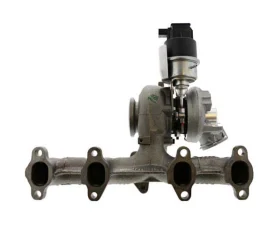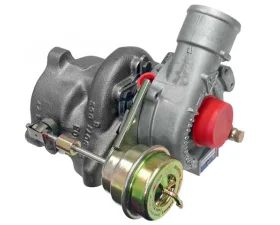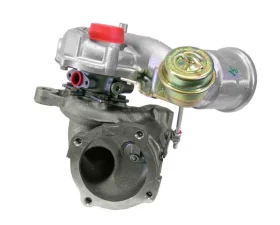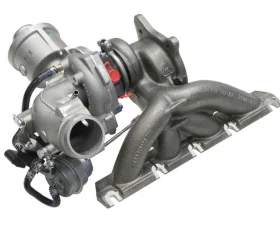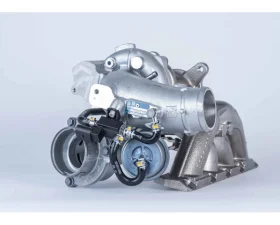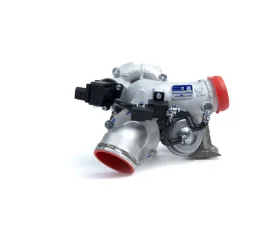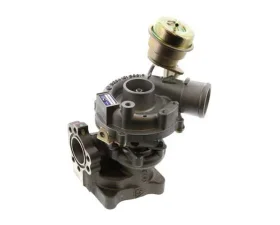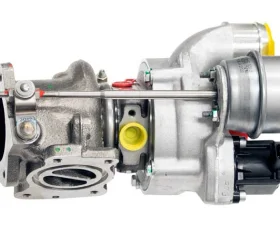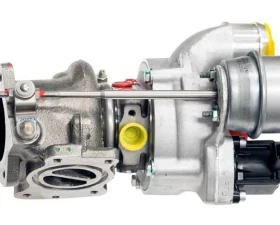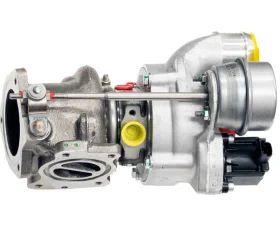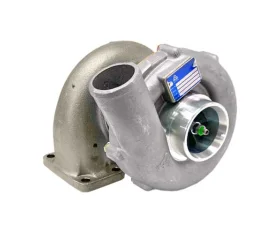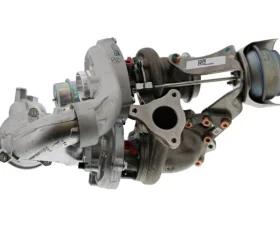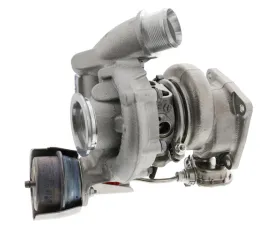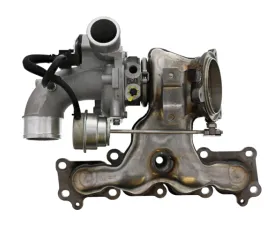Turbos & Kits

OEM Turbos
A turbocharger is simply a supercharger that is powered instead by a turbine in the exhaust stream. The first of these, dating to 1915, were referred to as “turbosuperchargers” and were employed on radial aircraft engines to boost their power in the thinner air found at higher altitudes.
A turbocharger uses the velocity and heat energy of the hot exhaust gases rushing out of an engine's cylinders to spin a turbine that drives an impeller which in turn compresses more air back into the engine. A supercharger also pumps additional air into the engine, but it is instead driven mechanically by the engine via a belt that runs off the crankshaft or, these days, by an electric motor.
The concept of forcing an engine more air than it would normally ingest, so that it can burn more fuel and produce more power. This additional intake air can be supplied by either a turbocharger or a supercharger. Both are air compressors, but they operate and perform very differently.
In that fashion, turbochargers capitalize on some of the "free" energy that would otherwise be completely lost in the exhaust. Driving the turbine does increase exhaust back-pressure, which exerts some load on the engine, but the net loss tends to be less by comparison with the direct mechanical load that driving a supercharger involves.
What are a Turbocharger’s Advantages?
- Significant increase of horsepower
- Power vs size: allows smaller engine displacements to produce much more power relative to their size.
- Better fuel economy: smaller engines use less fuel to idle, and have less rotary and reciprocating mass, which improves fuel economy.
- Higher efficiency: turbochargers run off energy that is typically lost in naturally aspirated and supercharged engines (exhaust gasses) and therefore the recovery of this energy improves the overall efficiency of the engine.
And because it has these benefits, there are also notable cons when you wish to go the boosted lifestyle.
Turbo Cons
- Turbo lag: turbochargers, especially large turbochargers, take time to spool and provide a useful boost.
- Boost threshold: for traditional turbochargers, they are often sized for a certain RPM range where the exhaust gas flow is sufficient to provide an additional boost to the engine. Typically, they do not operate across as wide a range of RPMs as superchargers.
- Power surge: in some turbocharger applications, especially with larger turbochargers, reaching the boost threshold can lead to an almost instantaneous power surge, which could compromise tyre traction or cause some car instability.
- Oil requirement: turbochargers get very hot and often tap into the oil supply of the engine. This calls for additional plumbing and is more demanding in terms of engine oil. Superchargers typically do not require lubricating engine oil.
Vivid Racingcarries high-performance parts for almost any need. Click these links to choose from our selection ofBody Kits,Big Brake Kits,Seats,Custom WheelsandTires,Engine Parts,Exhaust Parts,Intakes,Suspension,andTransmission Parts.
Buying fromVivid Racingis the best choice you can make. We back every part we sell with our guarantee of satisfaction.
Buy online or give one of our world-class sales professionals a call at 1-480-966-3040. If you don't see what you are looking for, Call Us.
We can help.Vivid Racingwas voted #1 in customer service nationwide!
Hands-On Experience and Professionalism is what makes us the best.
LOOKING FOR OEM PARTS?We can help.
Are you tired of paying overly inflated prices that the dealers charge for their parts?Vivid Racingcan save you up to 60% off the dealers' prices. Click here to visit ourOEM PARTS STORE.
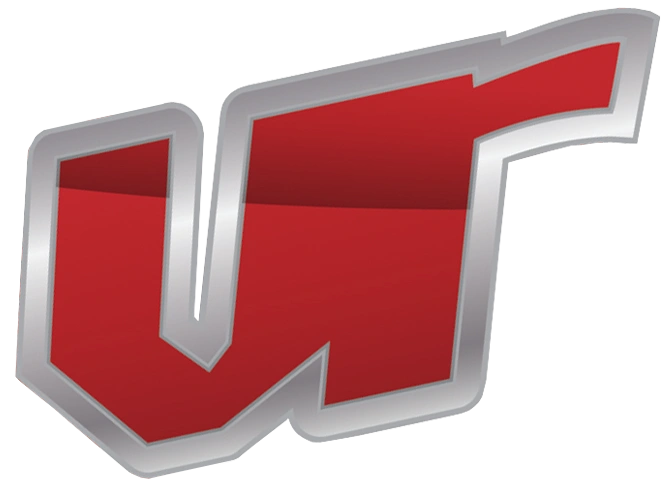
.jpeg?q=90&p=thumb&w=200&h=200)
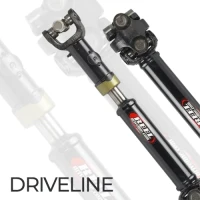
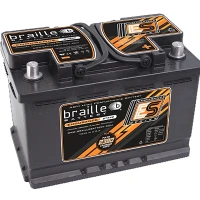
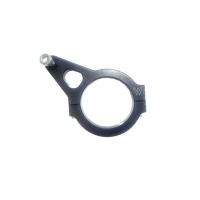
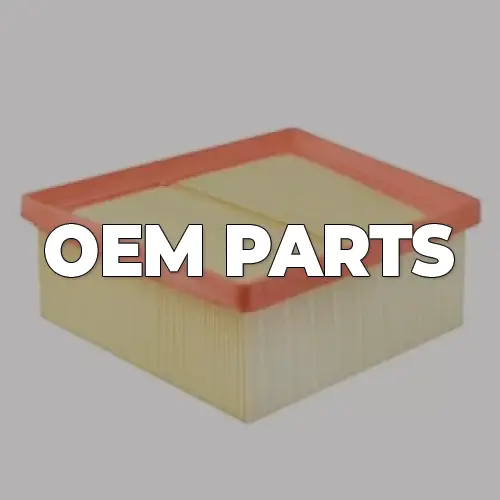

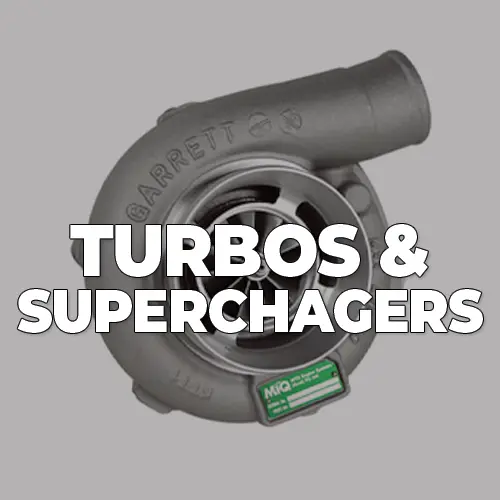

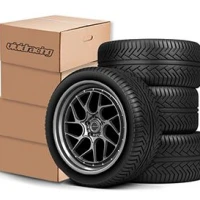

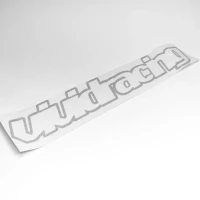
.jpeg?q=90&p=thumb&w=40&h=40) Brakes
Brakes  Driveline
Driveline  Electronics
Electronics  Handlebars & Controls
Handlebars & Controls  Package Deals
Package Deals  Wheel Accessories
Wheel Accessories  Wheels by Vehicle
Wheels by Vehicle  Universal & Repair
Universal & Repair  Vivid Racing Gear
Vivid Racing Gear 